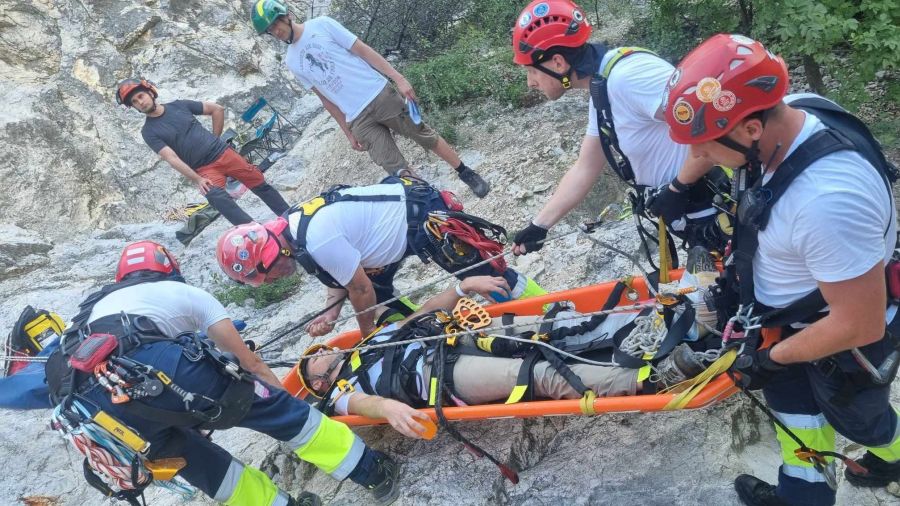 For years, Belgian firefighters have been organising rescue exercises and competitions for their own national staff under the name of The Grimpday. In recent years it has grown into a truly international competition - staying in the original country - but professional and civilian rescue organisations from all over the world come to compete. Under the leadership of the Hungarian Hunor professional heavy search and rescue (USAR) and industrial technical rope rescue team, which has already participated successfully in The Grimpday for several years, a team of enthusiastic volunteers has created the Hungarian equivalent of The Grimpday, focusing on mainly Hungarian firefighting and other rescue organisations, as in the original competition.
For years, Belgian firefighters have been organising rescue exercises and competitions for their own national staff under the name of The Grimpday. In recent years it has grown into a truly international competition - staying in the original country - but professional and civilian rescue organisations from all over the world come to compete. Under the leadership of the Hungarian Hunor professional heavy search and rescue (USAR) and industrial technical rope rescue team, which has already participated successfully in The Grimpday for several years, a team of enthusiastic volunteers has created the Hungarian equivalent of The Grimpday, focusing on mainly Hungarian firefighting and other rescue organisations, as in the original competition.
The weekend competition provided an opportunity for volunteer and professional rescue teams to showcase their rope skills, creativity, planning and organisational skills, and cooperation abilities in complex rescue simulation situations after years of practice. The competing teams had to perform tasks in urban, industrial and field conditions. All the competing teams rescued people from a 60-metre-high Ferris wheel on Elisabeth Square, lifted seriously injured people onto the embankment, moved overweight stretchers in a city centre staircase and all teams had to deal with the rubble of the Rókahegyi quarry.
The latter, Rókahegyi quarry station, was planned, organised and operated by the Hungarian Cave Rescue Service. At our station, the 5-person teams had to locate, examine and, after treatment, safely transport to an ambulance the victim of an imaginary climbing accident. The BMSz delegated 2 cave rescue doctors to assess the medical part of the task and 3 cave rescuers to observe the technical part of the transport.
The basic story of our station was that a climber fell from a height while bouldering, but apart from an isolated ankle injury, he had no other serious injuries. The participating teams had to assess the condition of the injured person after a structured ccABCDE patient assessment, be able to determine the injury, its extent and then fix the limb professionally using 21st century tools. The patient, who was unable to walk, had to be carried in a stretcher down a slope with a gradient of about 30 degrees, with cracks and small debris. Of course, there was a choice between the difficult and the even more difficult way down: one way was a long, uncomfortably steep, small stony slope, the other a rocky slope with broken sections and then small, also rolling, but less steep. The steepness of the slopes was right in the most uncomfortable range, where you really need to secure the stretcher, but you can't yet put most of the stretcher's weight on the rope. Here, the teams had to figure out how to secure the stretcher and then divide their scarce manpower between letting the stretcher and the rescuers down.
For this task, the BMSz team drew on their own experience and set a target of half an hour, which the fastest team almost managed to achieve with a few minor mistakes. Teams without relevant field rescue experience required almost double the time.
When moving stretchers in the field, experience has shown that many people and many hands are needed, since in many places the only way to transport a patient in pain lying in a stretcher is by giving hand. In the light of these facts, we congratulate the teams that took part in the competition, who carried out their tasks with very scarce human resources.
Special congratulations to the team of the Budapest VIII District Fire Brigade who won the competition on the basis of their performance at the 4 venues.


